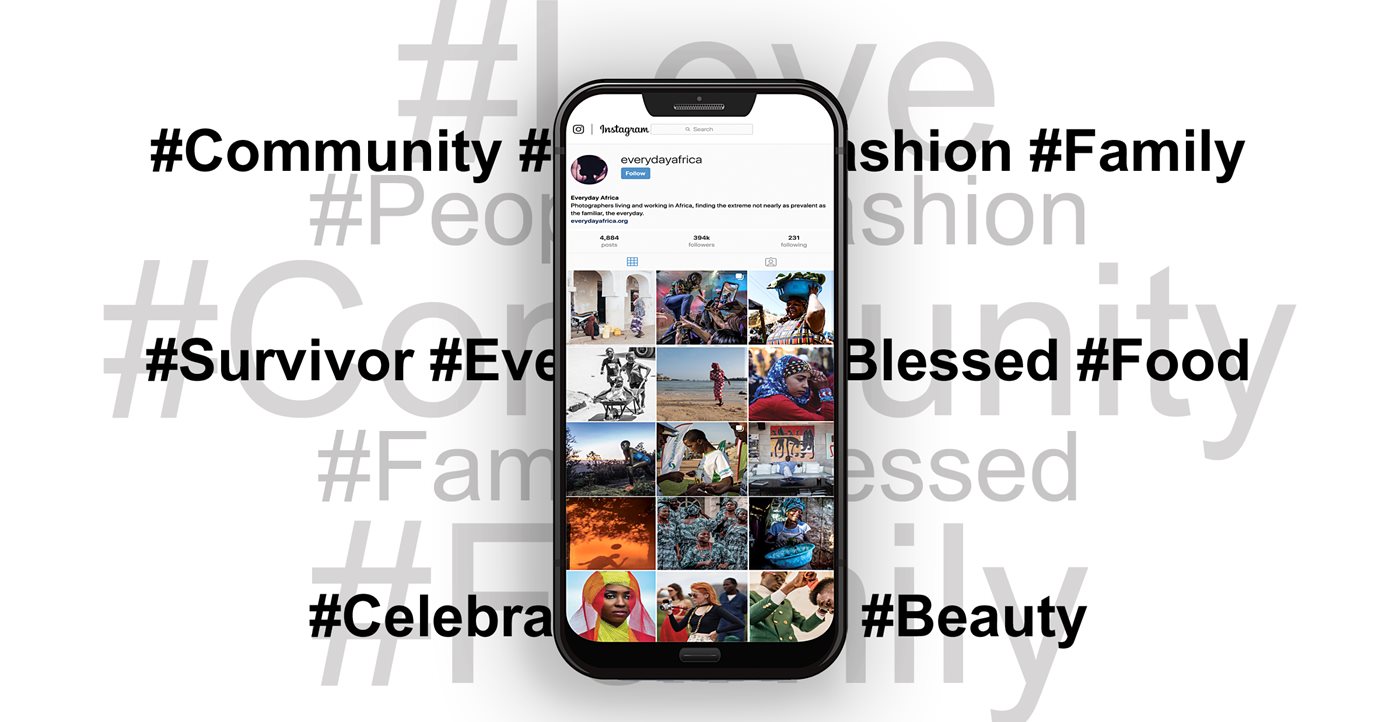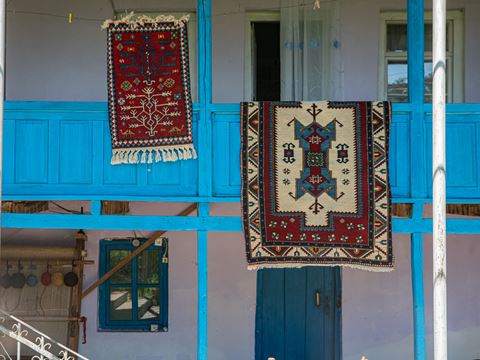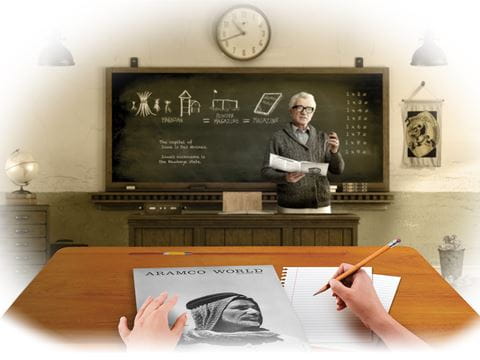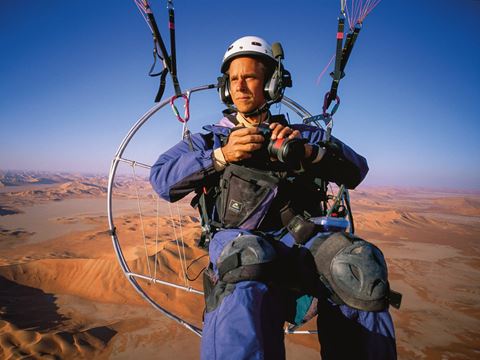
Understanding Social Media
Subject:
Media Studies
Region:
Global
The news media share information that professional journalists gather and report. For many of us, that news is the only way we know about people and parts of the world that aren't part of our own experience. But smartphones and social media are changing what we learn about each other.
For students: We hope this guide sharpens your reading skills and deepens your understanding.
For teachers: We encourage reproduction and adaptation of these ideas, freely and without further permission from AramcoWorld, by teachers at any level.
Common Core Standards met in this lesson: RL/RI.1 (see details below).
—The Editors
Do you have any comments? I'd be pleased to hear from you at [email protected]
—Julie Weiss
News media tend to focus coverage on a few things. Wars and politics are near the top of the list, as are other disruptions of the smooth flow of public life, like weather disasters and economic upheavals. And of course gossip about celebrities often passes for news, because celebrities, by definition, exist outside the flow of most people's everyday lives.
All well and good when the news is about a place you know, because you know that there's more to life than that. But what happens when traditional news outlets are the only way you learn about a place and its people? For many people in many countries, Middle Eastern and Muslim-majority societies are nearly unknown—so traditional news sources play an outsize role in how they're perceived. Do a Google News search for "Middle East," for example. What comes up? Assign each person (or small group) in your class to read or watch one of the search results and report on it to the rest of the class. When you look at all the sources, what topics do you see? List them. Imagine you know nothing about the Middle East but what came up on your search. Write a sentence or two describing the place, the people who life there and their concerns. Have volunteers share their summaries.
As a class, discuss what's missing from the news stories you've read about the Middle East. Of course, it can be difficult to notice what's not there, but think about some of the things you know about your own community, and even things that are part of your daily life. For example, it's unlikely that the news you found mentions anything about how kids get to school, or for that matter, what they do once they're there. It probably doesn't include stories about friends or birthdays, or the local library, or where people swim when its hot. You get the idea.
... and More
Now look at the images of @everydaymiddleeast that appear on Instagram and that accompany this article. What do they add to what you learned about the Middle East from your news search? Add a sentence to the summary you wrote before to include what you've learned from the Instagram images.
How would you explain the purpose of the #everyday Instagram accounts to someone who hasn't read "The Extraordinary Ordinary #everyday"? Use your own experience searching "Middle East" and then looking at @everydaymiddleeast to help you. Either present your explanation to another student, or write it as the script for an explanation you would give to someone else. Then discuss with your peers whether you think that the #everyday images "will diminish fear among cultures and promote mutual understanding," as the founders hope. Why or why not?
DIY (Do It Yourself)
Try it yourself. Take photos that could be posted on an Instagram site called @everyday[yourtowngoeshere]. Share the photos as a class and together assemble them in a way that's similar to the screen shots that accompany the article. Compare the images with one day's headline news stories. Make a chart to compare and contrast the two, answering the questions: What are the benefits of each medium? How is each medium limited?
This lesson meets this Common Core Standard:
RL/RI.1 Read closely to determine what the text says explicitly and to make logical interferences from it; cite specific textual evidence when writing or speaking to support conclusions drawn from the text.
For teachers: We encourage reproduction and adaptation of these ideas, freely and without further permission from AramcoWorld, by teachers at any level.
Common Core Standards met in this lesson: RL/RI.1 (see details below).
—The Editors
Do you have any comments? I'd be pleased to hear from you at [email protected]
—Julie Weiss
The Extraordinary Ordinary #everyday
The news media share the information that professional journalists gather and report. For many of us, that news is the only way we know about people and parts of the world that aren't part of our own experience But smartphones and social media are changing what we learn about each other. That's the subject of "The Extraordinary Ordinary #everyday." By the time you've read the article and completed the activities, you will be able to:- Distinguish between traditional news media and social media.
- Describe the benefits of each.
- Evaluate how social media can further understanding among people.
News media tend to focus coverage on a few things. Wars and politics are near the top of the list, as are other disruptions of the smooth flow of public life, like weather disasters and economic upheavals. And of course gossip about celebrities often passes for news, because celebrities, by definition, exist outside the flow of most people's everyday lives.
All well and good when the news is about a place you know, because you know that there's more to life than that. But what happens when traditional news outlets are the only way you learn about a place and its people? For many people in many countries, Middle Eastern and Muslim-majority societies are nearly unknown—so traditional news sources play an outsize role in how they're perceived. Do a Google News search for "Middle East," for example. What comes up? Assign each person (or small group) in your class to read or watch one of the search results and report on it to the rest of the class. When you look at all the sources, what topics do you see? List them. Imagine you know nothing about the Middle East but what came up on your search. Write a sentence or two describing the place, the people who life there and their concerns. Have volunteers share their summaries.
As a class, discuss what's missing from the news stories you've read about the Middle East. Of course, it can be difficult to notice what's not there, but think about some of the things you know about your own community, and even things that are part of your daily life. For example, it's unlikely that the news you found mentions anything about how kids get to school, or for that matter, what they do once they're there. It probably doesn't include stories about friends or birthdays, or the local library, or where people swim when its hot. You get the idea.
... and More
Now look at the images of @everydaymiddleeast that appear on Instagram and that accompany this article. What do they add to what you learned about the Middle East from your news search? Add a sentence to the summary you wrote before to include what you've learned from the Instagram images.
How would you explain the purpose of the #everyday Instagram accounts to someone who hasn't read "The Extraordinary Ordinary #everyday"? Use your own experience searching "Middle East" and then looking at @everydaymiddleeast to help you. Either present your explanation to another student, or write it as the script for an explanation you would give to someone else. Then discuss with your peers whether you think that the #everyday images "will diminish fear among cultures and promote mutual understanding," as the founders hope. Why or why not?
DIY (Do It Yourself)
Try it yourself. Take photos that could be posted on an Instagram site called @everyday[yourtowngoeshere]. Share the photos as a class and together assemble them in a way that's similar to the screen shots that accompany the article. Compare the images with one day's headline news stories. Make a chart to compare and contrast the two, answering the questions: What are the benefits of each medium? How is each medium limited?
This lesson meets this Common Core Standard:
RL/RI.1 Read closely to determine what the text says explicitly and to make logical interferences from it; cite specific textual evidence when writing or speaking to support conclusions drawn from the text.
Other lessons

The Legacy of Borchalo Rug-Weaving in Georgia: Explore Cultural Change Through Critical Reading and Design
Art
History
Anthropology
The Caucasus
Analyze efforts to preserve a centuries-old weaving tradition, and connect the Borchalo story to questions of identity, memory and heritage.
Teaching Empathy: Five Classroom Activities From AramcoWorld
For the Teacher's Desk
Help students build empathy and community for the academic year with AramcoWorld’s stories and Learning Center lessons.
Visualizing From Where Food Comes: Teaching Environmental and Social Impacts of Global Farming
Environmental Studies
Geography
Examine global food production through George Steinmetz’s aerial imagery and evaluate how farming affects people, ecosystems and sustainability.